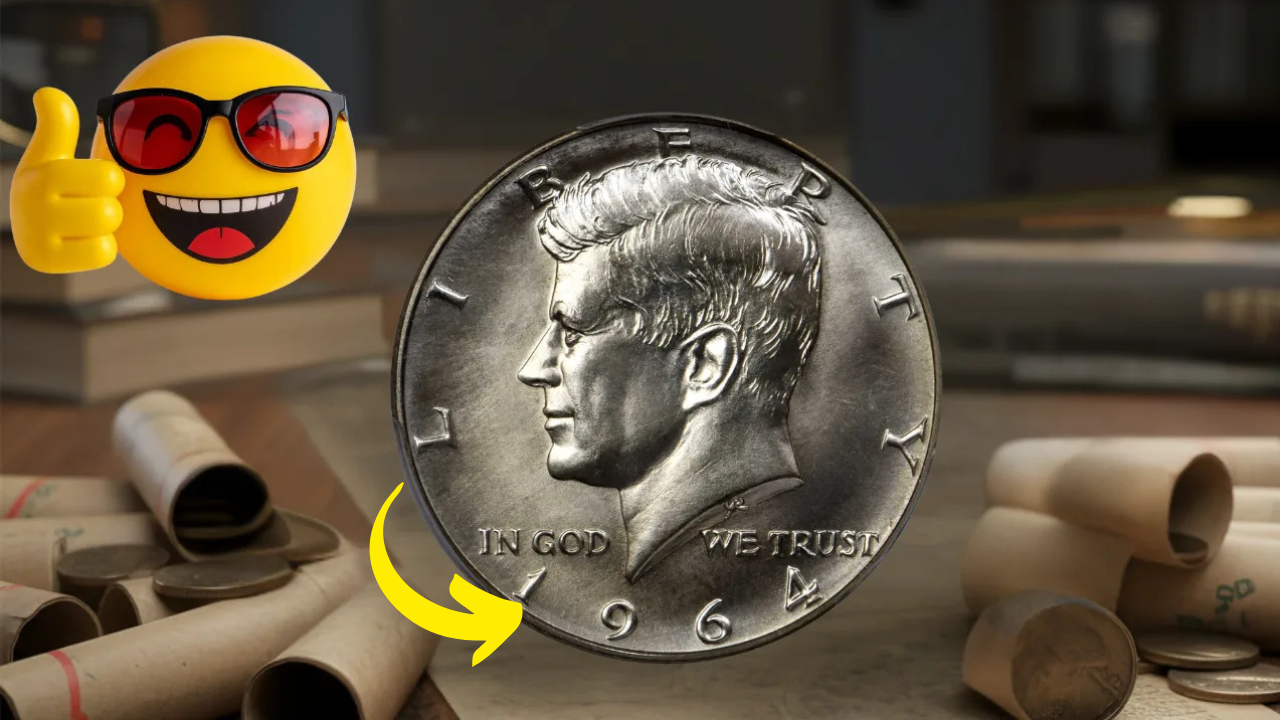More than six decades have passed since the 1964 Kennedy Half Dollar first entered circulation, yet it still inspires excitement among coin collectors. Even today, stories emerge of people finding the coin hidden among their change, bankrolls, or in an old drawer. For both coin enthusiasts and ordinary Americans, the 1964 Kennedy Half Dollar is more than just a piece of currency—it’s a link to history and a symbol of national memory.
A Coin Born Out of Tragedy
The Kennedy half dollar was first minted in 1964, just months after the tragic assassination of President John F. Kennedy in November 1963. The nation was in mourning, and minting a coin featuring Kennedy was considered a fitting tribute. Within a few months, the U.S. Mint issued a new half dollar, replacing the Franklin design.
Demand was tremendous. Americans weren’t spending it—they were hoarding it. The coin instantly became a national memento, a way for people to pay tribute to the late president.
Why 1964 Matters
The 1964 Kennedy Half Dollar is unique because it was the only year the coin contained 90% silver. Every half dollar after 1964 contained less silver (40% from 1965 to 1970, and none at all after 1971).
This high silver content gives the 1964 version intrinsic value and collectible appeal. Even worn-out coins removed from circulation are often worth more than their face value simply because of their silver content. In today’s bullion market, a 1964 Kennedy Half Dollar can fetch upwards of $10-$15 based on the melting value of the silver alone, while uncirculated or rare coins sell for much more.
Still found in Rolls today
You might think that after 61 years, it would be impossible to find a 1964 Kennedy half dollar in a bankroll. Nevertheless, collectors and hobbyists still report such discoveries.
Here’s why:
- Hoarded Coins Return to Circulation: Many families hoarded rolls of silver coins in the 1960s and 1970s. When estates are settled or old savings are redeemed, these coins sometimes return to banks.
- Circulation Period: Unlike paper currency, coins can last for decades. Although rare, 1964 Kennedy coins sometimes resurface.
- Half Dollars Are Not Commonly Used: Since half dollars aren’t used much these days, rolls often sit in bank vaults for years. This increases the chance of finding old coins.
For modern collectors, finding rolls of half dollars is a fun and inexpensive way to uncover a piece of history.
Collector Value
The value of a 1964 Kennedy Half Dollar depends on its condition and mintmark:
- Current condition: Primarily due to the silver content.
- Uncirculated: May fetch $20-$50 depending on luster and preservation.
- Proof Coins: Special proof coins from the Philadelphia Mint can be worth $100 or more.
- Rare Varieties: Errors, such as double dies, are especially valuable and can reach hundreds or thousands.
Collectors also appreciate this coin’s historical significance as the first Kennedy Half Dollar, making even a worn coin worthwhile.
An Enduring Symbol
For many, this coin isn’t just about silver or market value—it’s a symbol of memory. The Kennedy Half Dollar represents a period in American history marked by loss, but also one of resilience. Holding it feels like a piece of 1964, a tangible reminder of the president who inspired millions.
Even in 2025, as younger generations are becoming more interested in coin collecting, the 1964 Kennedy coin remains one of the most popular and accessible entry points. Its story resonates, and its presence in circulation—no matter how rare—keeps that story alive.
Final Thoughts
The fact that the 1964 Kennedy half dollar is still available in rolls today is a testament to this coin’s enduring place in American culture. While its silver value makes it inherently valuable, its true value lies in what it represents: a glimpse into a pivotal moment in American history.
So the next time you get the chance to borrow a half dollar roll from the bank, don’t miss it. Who knows—you might find a little piece of history inside.

